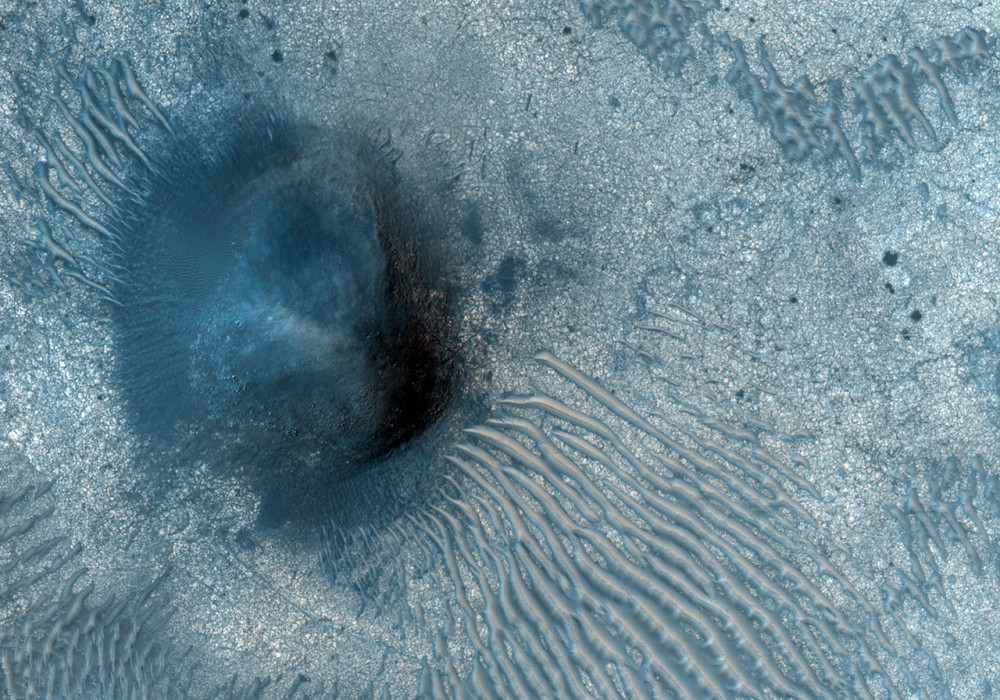This image covers a flat plain in the Nili Fossae region of Mars. The portion shown here is roughly 400 meters, or 1/4 mile, across.
Bright, fractured bedrock is visible underlying dunes or ripples of wind-blown sand. The parallel, dark blue curves across the bedrock surface (underneath the dunes) are the edges of successive rock layers. These may appear dark blue because dark sand has become trapped at the edges of the layers. Successive layers in the bedrock are also exposed in the walls of degraded impact craters elsewhere in the image.
The layered rocks here are billions of years old, and infrared spectra from the CRISM instrument have inferred that they contain minerals such as clays and carbonate that likely formed when liquid water chemically altered these rocks. This evidence for past water activity, combined with the general flatness of this particular location, make it a good candidate landing site for future Mars rover missions.
Written by: James Wray (5 November 2008)
This is a stereo pair with PSP_010219_2020 .
More info and image formats at http://hirise.lpl.arizona.edu/PSP_009929_2020
Image: NASA/JPL/University of Arizona
